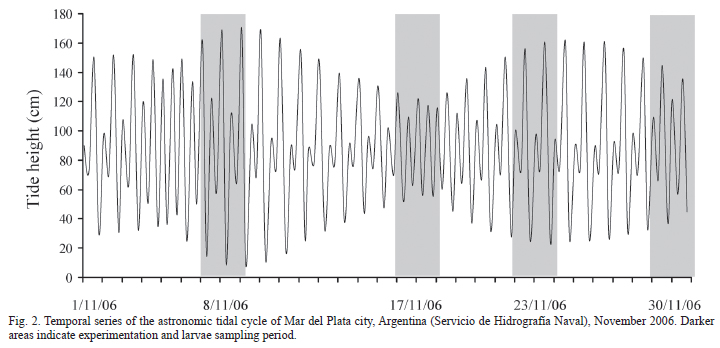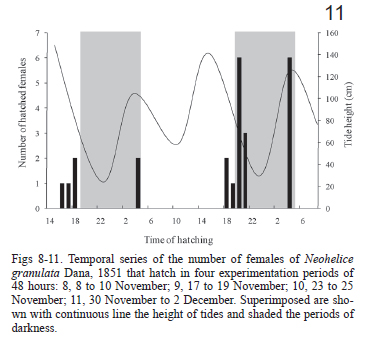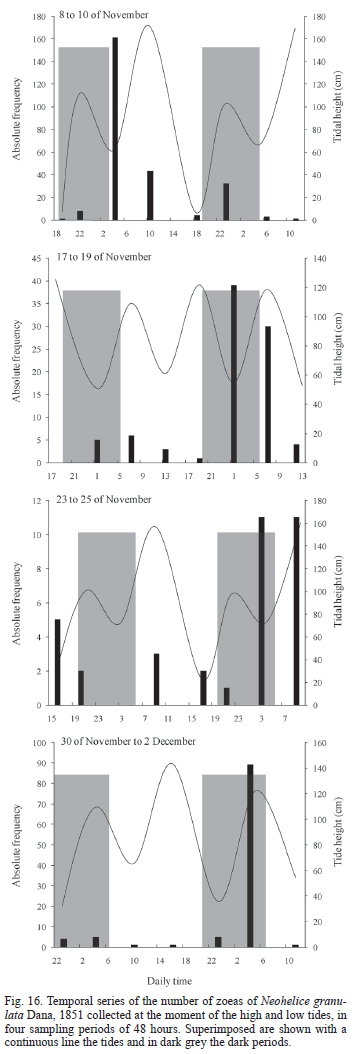Synchronization in the events of the reproductive cycle in female Neohelice granulata Dana, 1851 were studied from samples taken weekly and biweekly from September to December 2006 in the Laguna Mar Chiquita. The timing and larval hatching and synchronicity were inferred from numbers of ovigerous females and observing the stages of embryonic development. Synchronization in larval hatching also was observed in females in experiments in dark for a period of 48 hours, at three different salinities (10, 23 and 33 ppm). In addition plankton sampling were performed in order to study larval exportation at the field and its link to the tidal and light/dark cycles. We found that ovigerous females of N. granulata have a marked synchronization in embryonic development which results in that most of berried females are close to hatching within a period of maximum tidal range (days). Within this period, there is a synchronization of hatching at a time scale of hours, governed by environmental conditions. The salinity range used in this study (10-32‰) did not affect hatching synchronicity neither time to hatch. Hatching was synchronized according to endogenous rhythms governed mainly by the tidal cycle and secondarily by the breadth of it. It is also conditioned by the light-dark cycle through an exogenous cycle, so that the hatchings would occur mostly at night high tides.
Hatching synchronicity; endogenous rhythm; larval exportation strategy; estuaries; southwestern Atlantic
















